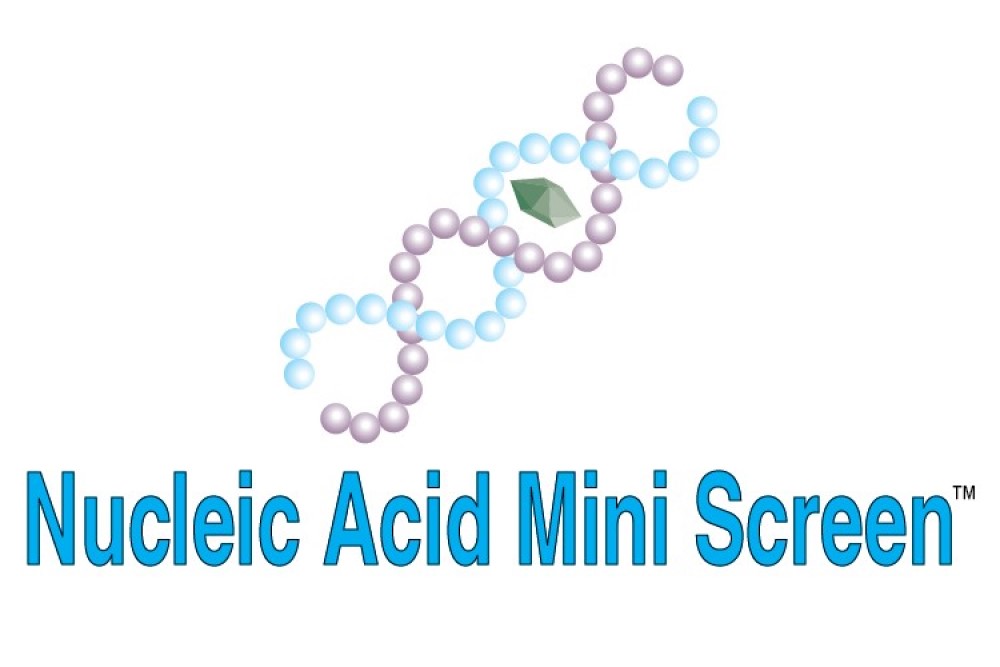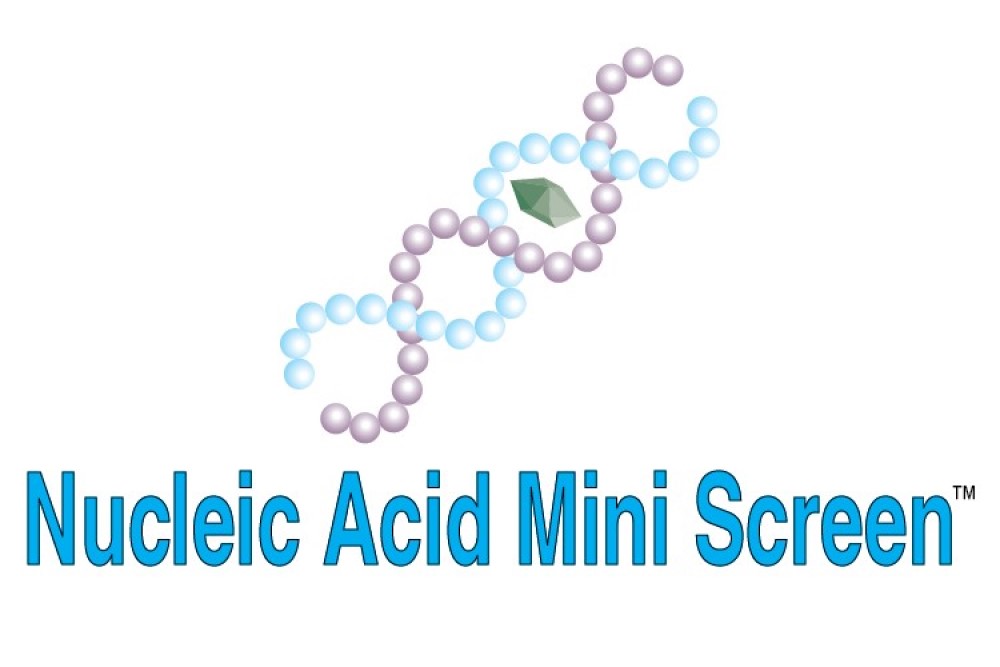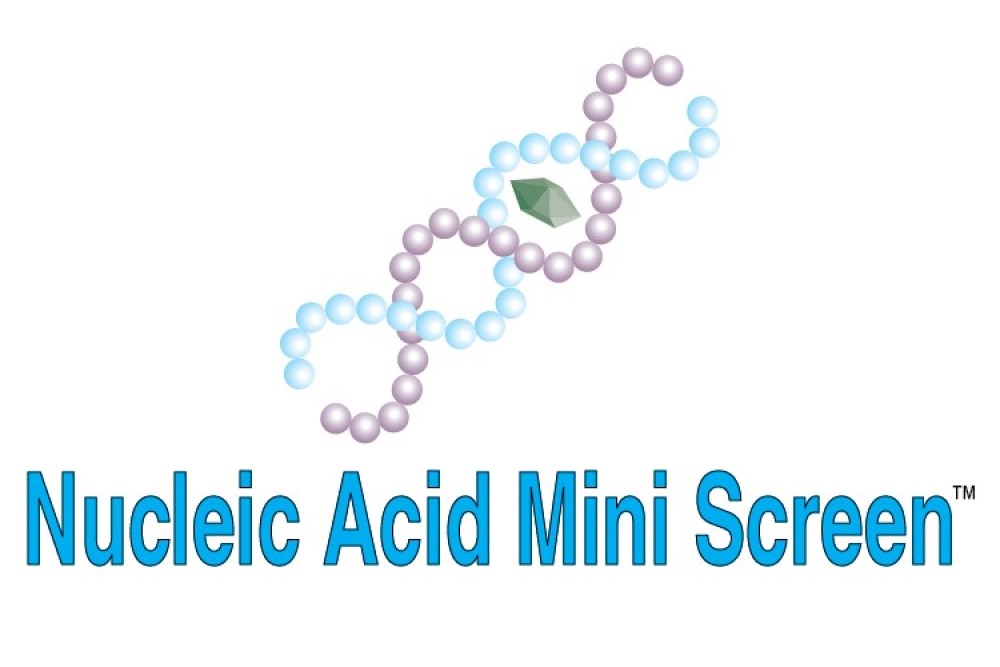Hampton Research蛋白结晶试剂盒






Products > Crystallization Screens > Nucleic Acid Mini Screen > Nucleic Acid Mini Screen (NAM)
Nucleic Acid Mini Screen (NAM)
Applications
- Crystallization screen for nucleic acid fragments
Features
- Screen a matrix of pH, polyamine, & ions
- Can be used with ribozymes, pseudoknots, RNA, & DNA
- Uses MPD as the primary precipitant
Description
The Nucleic Acid Mini Screen is an efficient screen formulated to assist in the determination of preliminary crystallization conditions of nucleic acid fragments.1 The formulation is based upon the publication, “A Highly Efficient 24 Condition Matrix for the Crystallization of Nucleic Acid Fragments” where the preliminary crystallization conditions of 35 nucleic acids were determined utilizing this formulation.1
Samples include DNA-Drug complexes, C-Tetrad and G-Quartet Motifs, RNA oligomers, and others. By using 1 to 4 mM oligonucleotide stock concentration, the screen requires less than 100 µl of sample. The screen is typically performed at 4°C although room temperature incubations can also be performed. To evaluate the effect of equilibration kinetics as well as initial and final sample concentrations, the screens are typically performed using the hanging or sitting drop vapor diffusion method with two drops on a slide (1 µl + 2 µl and 2 µl + 2 µl), side by side. The 24 well format of the mini screen provides for a fast setup and uses small amounts of sample. This makes it possible to cost-effectively screen many sequences as well as variations of a particular sequence. The composition of the Nucleic Acid Mini Screen allows one to apply the formulation to other nucleic acids such as deoxy- and ribozymes, pseudoknots, and tRNAs.
Each Nucleic Acid Mini Screen kit (HR2-118) contains 24 unique reagents, 1.0 ml each. All solutions are formulated using ultra-pure Type 1 water and are sterile filtered. Dehydrants is available separately as 200 ml of 35% v/v (+/-)-2-Methyl-2,4-pentanediol in deionized water(catalog number HR2-863). Formulated in Type 1+ ultrapure water: 18.2 megaohm-cm resistivity at 25°C, < 5 ppb Total Organic Carbon, bacteria free (<1 Bacteria (CFU/ml)), pyrogen free (<0.03 Endotoxin (EU/ml)), RNase-free (< 0.01 ng/mL) and DNase-free (< 4 pg/µL) and sterile filtered into sterile containers.
Note: Crystallization kit (HR2-118) and Dehydrant/reservoir solution (HR2-863) are sold separately. Both items are needed to perform the screen.

Click to Zoom In
CAT NO
HR2-118
NAME
DESCRIPTION
1 ml, tube format
PRICE
$193.00
cart quote
CAT NO
HR2-863
NAME
DESCRIPTION
35% v/v – 200 ml
PRICE
$50.00
cart quote
Support Material(s)
 HR2-118 Nucleic Acid Mini Screen Documents
HR2-118 Nucleic Acid Mini Screen Documents HR2-118 Nucleic Acid Mini Screen SDS
HR2-118 Nucleic Acid Mini Screen SDS HR2-863 (+/-)-2-Methyl-2,4-pentanediol SDS
HR2-863 (+/-)-2-Methyl-2,4-pentanediol SDS Nucleic Acid Mini Screen Formulation & Scoring
Nucleic Acid Mini Screen Formulation & Scoring Certificate Of Analysis
References
1. Berger, et al., A Highly Effective 24 Condition Matrix for the Crystallization of Nucleic Acid Fragments. Acta Cryst. Section D. (1996) Vol. D52 Part 3, 465-468.
2. Adams, A., Nucleic Acids Research (2002) Vol. 30, 719-725.
3. Crystallization and preliminary X-ray diffraction analysis of an Escherichia coli tRNAGly acceptor-stem microhelix. C. Forster, M. Perbandt, A. B. E. Brauer, S. Brode, J. P. Furste, C. Betzel and V. A. Erdmann. Acta Cryst. (2007). F63, 46-48.


Hampton Research, first in crystallization since 1991, developing and delivering crystallization and optimization screens, reagents, plates, and other tools for the crystallization of biological macromolecules, including proteins (antibody), peptides (insulin), and nucleic acids (DNA).
- Products
- Gallery
- My Account
|
|
|
- Contact Us
- Quick Order
- Support
|
- Privacy Policy
- Terms and Conditions
|
- Products
- Gallery
- My Account
- Support
- Contact Us
- Quick Order
- Privacy Policy
- Terms and Conditions
|
|
|
|
|
|
|
© 2022 HAMPTON RESEARCH CORP.
| Website by Skyhound Internet




